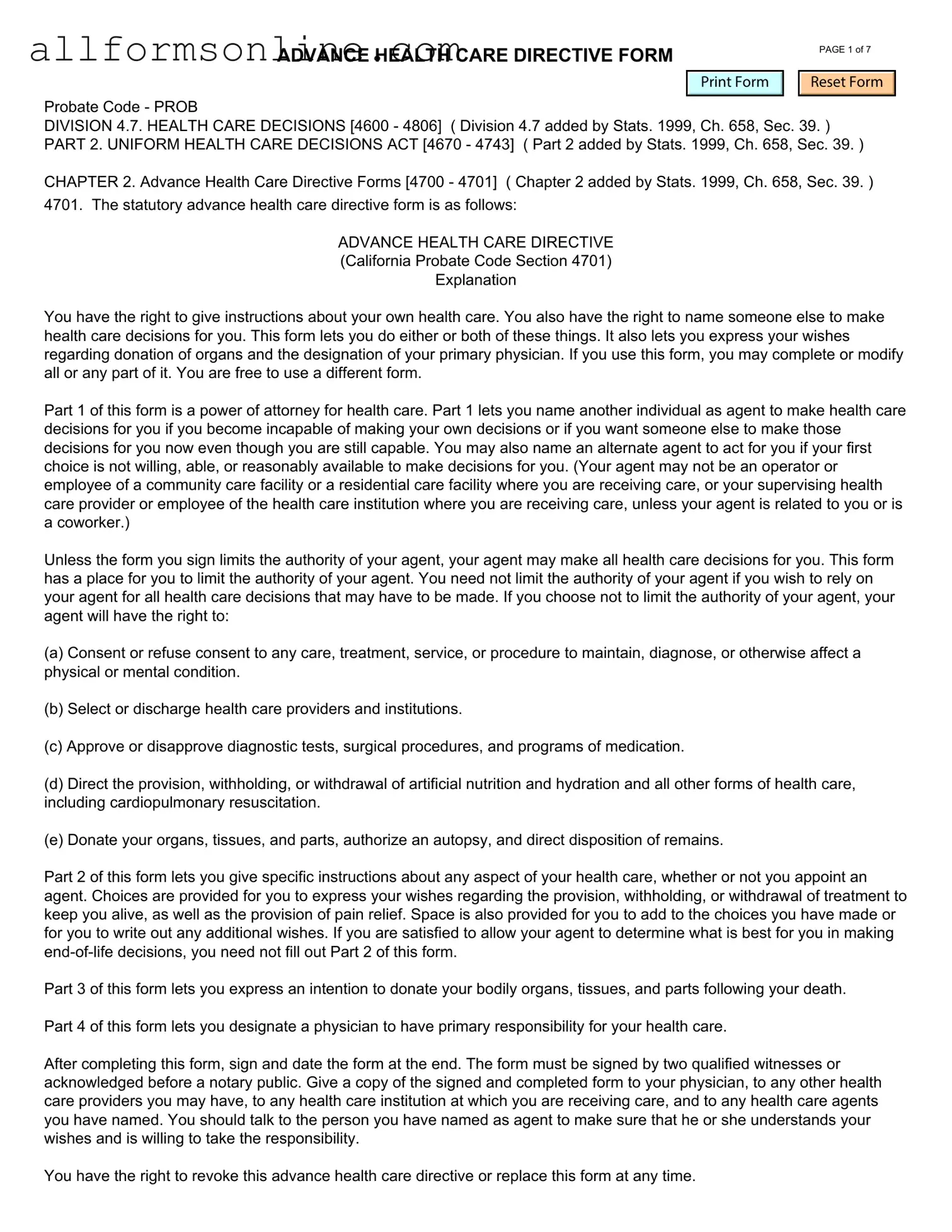What is a California Advanced Health Care Directive?
The California Advanced Health Care Directive is a legal document that allows individuals to outline their preferences for medical care in the event that they become unable to communicate those wishes themselves. It combines two important components: a health care power of attorney and a living will. The health care power of attorney designates someone to make medical decisions on your behalf, while the living will provides guidance on your treatment preferences, such as end-of-life care and life-sustaining measures.
Who should consider completing an Advanced Health Care Directive?
Anyone aged 18 or older should consider completing an Advanced Health Care Directive. This document is particularly important for individuals with chronic illnesses, those undergoing major surgeries, or anyone who wants to ensure their medical wishes are respected. By having this directive in place, individuals can provide peace of mind for themselves and their loved ones, knowing that their healthcare decisions will be made according to their preferences if they are unable to express them later.
How do I complete a California Advanced Health Care Directive?
To complete the California Advanced Health Care Directive, you can obtain a form from various sources, including healthcare providers, legal offices, or online resources. After acquiring the form, you will need to fill it out by providing your personal information and specifying your healthcare wishes. It is crucial to designate a trusted person as your agent for medical decisions. Once the form is completed, it must be signed in the presence of a witness or a notary public to ensure its validity. It is advisable to provide copies to your designated agent, family members, and healthcare providers.
Can I change or revoke my Advanced Health Care Directive?
Yes, you can change or revoke your Advanced Health Care Directive at any time as long as you are mentally competent. If you wish to make changes, you should complete a new directive and ensure that it is signed and witnessed properly. To revoke an existing directive, you can simply destroy the document or inform your healthcare provider and agent that you no longer wish for it to be in effect. It is important to communicate any changes to all parties involved to avoid confusion regarding your healthcare preferences.
